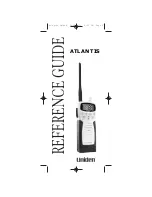
Axcera-430B FCC Type Acceptance Report Parts List/Tune-up Info
February 2004
7-12
Step 9 below describes how to set the modulation depth through the use of a
television demodulator or a zero-spanned spectrum analyzer tuned to the
visual IF frequency.
Figure 7-1. Waveform
7.
The following test setup is for the adjustment of the depth of modulation and ICPM
at IF:
A. Remove the cable that is on J18 and connect the double-sideband, 45.75-MHz
visual IF signal from J18 to a 10-dB splitter/coupler. Connect the coupled port
of the splitter/coupler to the RF input of a television demodulator. Connect the
direct port to a spectrum analyzer.
B. Connect the 75-
Ω
video output of the demodulator to the video input of a
waveform monitor. For ICPM measurements, also connect the quadrature
output of the demodulator to the horizontal input of the waveform monitor
using a 250-kHz, low-pass filter. (An oscilloscope can be used in place of a
waveform
monitor).
C. Set the controls of the demodulator to the following:
Detector mode – Cont
Sound trap – In
Zero carrier – On
Auto – Sync
Audio source – Split
De-emphasis – In
8.
Move jumper W7 on J4 to the Clamp Disable position. Readjust pot R41, manual
offset, for the correct depth of modulation by observing the demodulated waveform
on the waveform monitor or on the spectrum analyzer set to zero span.
9.
Check the demodulated video for a proper sync-to-video ratio (sync is 28.6% of the
total white video signal). If sync stretch is needed, adjust R45, sync stretch cut-in,
until sync stretch occurs. Adjust R48, sync stretch magnitude, for the proper
amount of stretch. Readjust R41, manual offset, if needed, for the correct depth of
modulation.
10. Move jumper W7 on J4 to the Clamp Enable position. Readjust pot R152, depth of
modulation, for the correct depth of modulation.
















































